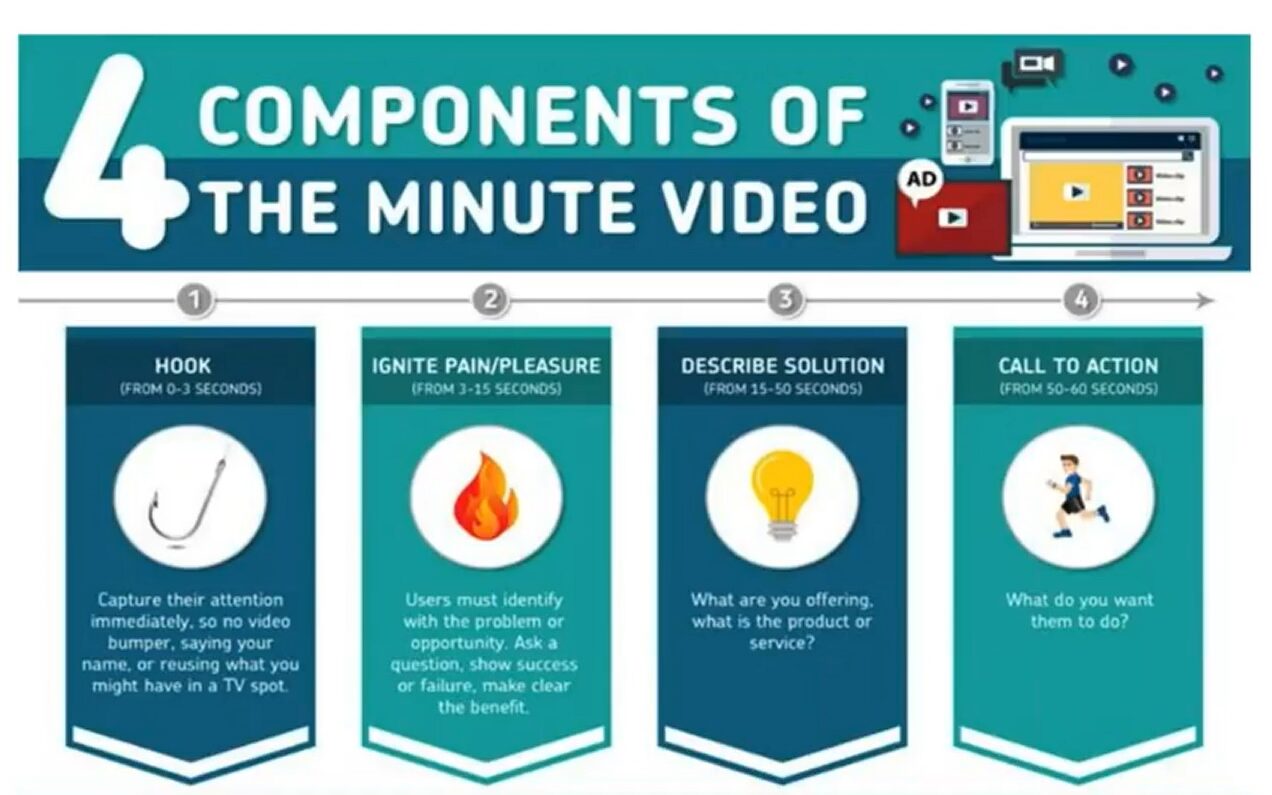In TikTok, we all know that the emphasis is on video posts.
The opening hook is the most important part of a 15-second to one-minute video. And we’ve interviewed a ton of Tik Tokers and looked at the ones that didn’t work. So every time, it’s the hook that matters the most.

So what is it that you can do in the first two seconds? Here are a couple of unique case studies.
Opening Hook for an Autistic Child Therapy Company
Let’s take the example of advertising for an autistic child therapy company. A hook to get the parents’ attention could be an autistic kid hitting his mom because that’s what they do.
However, you have to be careful because TikTok has violence rules. They’re a little softer than Facebook. We had ones where we replayed footage of a robbery. By doing this on Facebook and short videos for the US Concealed Carry Association, it took them from 6 million to 60 million a year in memberships.
But like the rule used to be, if you showed violence that could potentially make the viewer feel like they were afraid – say, if the gun were pointing towards them or sometimes even pointing away, they’d still disapprove. So TikTok is now more careful, but not as careful about things that could potentially condone violence.
So if you show a parent with an autistic child and then you put some big text on the top about autism, or “Here’s what Sally’s doing with her child.” or something where you’re telling a story, then it doesn’t feel like you’re in their face.
One thing that works with related industries, like home services or real estate or roofing, or chiropractor, you could say, “Do you have back pain?” “Are you a homeowner in Atlanta, Georgia?”
What you’re trying to do is use that big text. You’re trying to immediately create that relevancy. So part of the hook is something visual that has motion where you’re walking and talking, or you’re with somebody else. And you have that text so that people won’t scroll by. They can see, “Oh, my child has autism. Oh, mine does too. I’m going to stay and watch.”
And then you’re going to say, “Here’s my tip.”, or show a counselor you have with you, or interview these parents, and they’re giving this tip. You want to make it seem not like a straight-up commercial, but they’re there with you, and you guys are both concerned—parents talking about your child. You could even face blur the child because of COPA and these other rules because they’re minors. We have a lot of parents that show their children, but it’s just your comfort level and what you want to do.
TikTok strategy for People with Disabilities
People who have a disability or have been in an accident, or have had a stroke.
There’s this one kid, and half his face is melted off. He’s got these videos showing his face. Or my buddy Nick Santonastasso where he’s got no legs and half an arm. And he’s making videos of himself, water skiing, driving a car, and doing all these things. There’s a spectacle element to that which you may or may not want to do. Some people have been able to exploit that angle in a way that isn’t baggy or making you look weird. This example may or may not tie in with dealing with a stroke, recovering your abilities, and going through training and rehab, but there may be a deeper story.
Like my buddy, Keith Kranz, who is a co-author of our best-selling book on Facebook advertising. And what he’s done on TikTok is he’s made videos about the afterlife and near-death experiences. So he’s talked about these experiences where you die for a couple of seconds, your heart stops, you see other things, and then you get pulled back. Then, you wake up in the operating room, hovering above your body for a moment. So, he’s talking about all these near-death experiences.
Now, what does that have to do with Facebook ads? Nothing, but it’s a way to attract attention.
